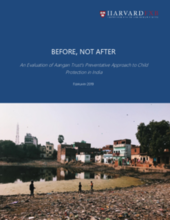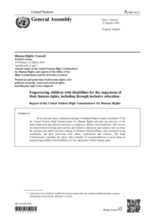Displaying 341 - 350 of 1070
This study tests the prediction that foster youth who perceive having more opportunity for voice, even indirectly via a representative, more favorably rate the dependency system.
This webinar includes presentations from the Democratic Republic of Congo and the Philippines, sharing experiences designing, managing and evaluating parenting interventions to reduce violence against children and adolescents by parents and caregivers.
This study documents and evaluates the harm prevention work carried out by the children’s rights nonprofit Aangan Trust since late 2015 in Konia, a peri-urban slum area in Varanasi, a large city in the Indian state of Uttar Pradesh.
The aim of this study was to estimate the prevalence of Child Protective Services (CPS) reports during early childhood and substantiated investigations during childhood for children living in different types of neighborhoods.
In this webinar presented by RISE Learning Network, Omattie Madray and Zenainda Rosales presented an extensive study recently carried out which analyzed over 100 documents and conducted over 20 interviews to gain insights on practices of organizations supporting and caring for boys affected by sexual violence in their recovery process.
The current study compared behavioral and adrenocortical functioning of maltreated and comparably aged (1.5–3 years) institutionally-reared children soon after (1.5–2.5 months) placement in foster care or adoptive homes, respectively.
Using a pooled data set of two waves of the National Surveys of Children’s Exposure to Violence, this study investigates links between indicators of socioeconomic resources and lifetime exposure to two different forms of child neglect (physical and supervisory), examines how neglect is associated with the risk of other types of victimization, and estimates the impact of neglect on trauma symptoms.
The goals of this study were 1) to examine this relation in youth placed in foster care with high levels of maltreatment exposure, and 2) to investigate the relation between maltreatment frequency and acute pain, and maltreatment frequency and general chronic health condition.
In the present research, the aim was to develop, implement, and examine the effectiveness of an education program for mothers for the prevention of child neglect.
In the present report, submitted pursuant to Human Rights Council resolution 37/20, the United Nations High Commissioner for Human Rights provides an overview of the legal framework and practical measures to empower children with disabilities.


